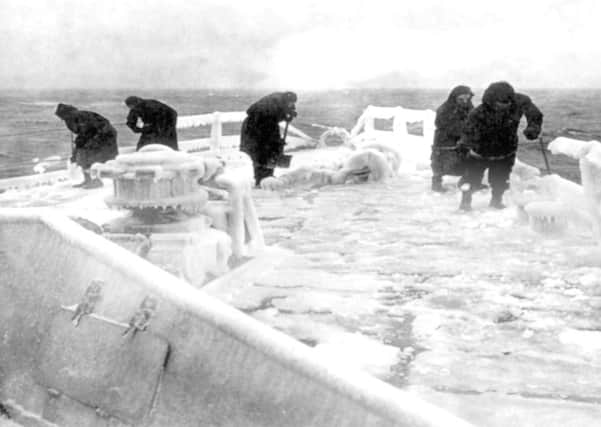William Loneskie: Museum keeps Arctic Convoys heroism alive


On 6-7 May, the Loch Ewe World War II Festival will celebrate the move with performers and re-enactment groups from all over Britain taking part.
Winston Churchill realised that Britain needed the Soviet Union to stay in the war if Europe were to be freed from the horrors of Nazi Germany. The convoys began, ferrying arms, food, munitions and supplies across hostile seas and worse weather to Archangel and the Kola Peninsula well above the Arctic Circle.
Advertisement
Hide AdAdvertisement
Hide AdThere they would be transported by rail to the fronts at Leningrad, Moscow, and Stalingrad where the Red Army and the Soviet Air Force had halted the German advance at great cost.
Mountainous seas higher than a five-storey building, ice freezing on ship superstructures, and almost perpetual darkness in the winter months were bad enough natural hazards, but bombing by the Luftwaffe, shelling from Kriegsmarine ships and torpedoes from Doenitz’s U-boats made this “the worst journey in the world”, as Churchill described it.
Glanville Hart of HMS Edinburgh said: “The cold was beyond belief and we had to chip ice off the deck every morning.”
Terence Donovan of HMS London remembered “those nail-biting turns of duty in boiler and engine rooms with only a couple of inches of steel separating us from the icy Arctic and with packs of U-boats intent on making a big gap in those couple of inches of steel” .
Jack Humble, on board HMS Mahratta, said after his ship was torpedoed: “ I was getting sucked under. I remember getting pushed round and round under the water. But with a little bit of luck I came to the top and managed to swim away from the ship. Everybody around me was dead. I tried speaking to people. Nobody answered. I couldn’t find anybody alive. They had been in the water longer than I had. I just thought that was the end.”
He was saved by HMS Impulsive, but most of his shipmates perished in the explosion or in the icy waters. You could only survive for minutes in those icy seas.
Tales of heroism from those dark days would fill volumes. One captain had the starboard side of his merchant ship painted white as he skirted the ice-pack in camouflage against German attacks. On the open bridges of corvettes officers froze to death. At Murmansk, Russian ground crews heated petrol in cans to get the fighters started in devastating cold. It was a fight for survival against a cruel and ruthless enemy.
For many years the Arctic Convoys were the ‘forgotten campaign’ of the Second World War. It’s right that knowledge and understanding of what these brave men endured – and the sacrifices they made – should be kept alive for future generations.
William Loneskie MA(Hons), Dip.Ed. is a retired geography teacher. He lives in Lauder, Borders. www.russianarcticconvoymuseum.org.